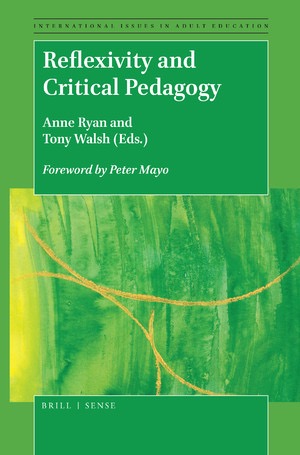reflexivity
Select an item by clicking its checkbox
Date Reviewed: December 10, 2019
There are these two young fish swimming along and they happen to meet an older fish swimming the other way, who nods at them and says "Morning, boys. How\'s the water?" And the two young fish swim on for a bit, and then eventually one of them looks over at the other and goes "What the hell is water?” David Foster Wallace, This Is Water
Upon reading this volume, I was repeatedly reminded of the late David Foster Wallace’s speech, “This is Water” (Little, Brown, and Co., 2009). Foster’s commencement speech hones in on some underlying themes of life many of those in higher education hope to instill in our students. Most importantly, I think, is the lesson that the most powerful influences on us are often those in which we are continually swimming but which we often cannot see. We must learn the practice of “seeing” the water we swim in. The practice is imperfect, messy, and will not make you particularly fun at parties, but it is vital for any transformative learning to occur. We can do this in a myriad of ways, such as those laid out in this volume, by practicing reflexivity.
What is reflexivity? The editors, influenced by Foucault’s concepts of discourse, knowledge, and power, define reflexivity as “encompassing a critical assessment of the significance of environment, power, and context as well as subjectivity in the delineation and construction of knowledge” (1). Reflexivity implies “a responsibility to critically examine our world, and how we position ourselves, and are positioned in that world” (1). Reflexivity is not narcissistic navel-gazing; it involves an intimate interrogation and critical examination of the personal, political, and professional. It is a practice. Contributor David McCormack describes reflexivity as the “practitioner’s attempt to turn their awareness to whatever is happening at any given moment at a personal, interpersonal, organizational, and societal perspective and to use that to illuminate the interpersonal dimension in their work” (122). The self is not freestanding – it always has a context.
Why is reflexivity critical to education? Education must be reflexive in order to avoid being merely indoctrination. Education can make space for reflexivity, can give educators and students an opportunity to analyze not just “what works” but also to interrogate for whom does it work and to what end. Learners need spaces to confront dominant narratives and cultures, and educational spaces can provide just that.
Contributors to this volume are primarily affiliated with the Department of Adult and Community Education at Maynooth University in Ireland. Each was invited to “challenge traditional thinking in education” (10). The chapters of this volume exemplify a myriad of ways reflexivity can be practiced in educational spaces. Despite this variety, each of these contributions emphasize the critical imaginative element among practitioners, a willingness to see things as possibly otherwise. Whether the reflexive practice happens within discursive analysis, writing, theater-making, transformative learning, systems theory, defining citizenship, facilitative work, or narrative inquiry, it requires imaginative capacity and a willingness of the practitioner to critically examine the very bedrock of their experience and the systematic assumptions underlying their everyday reality.
This book would be especially helpful for educators and administrators hoping to equip their students with theoretical tools and practical exercises aimed at “bringing to light dynamics of power which privilege conformity” and “revealing the normally occluded dynamics of dominant discourse”(6). It is also a resource for those who see themselves occupying hybrid spaces: those who acknowledge a multiplicity of knowledges and competing and intersecting realities and experiences, who interrogate and trespass boundaries, and, overall, who strive to “see” the water in which they swim.
